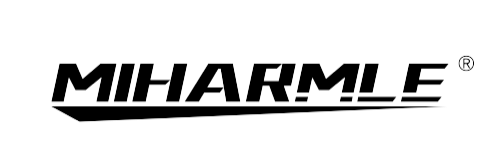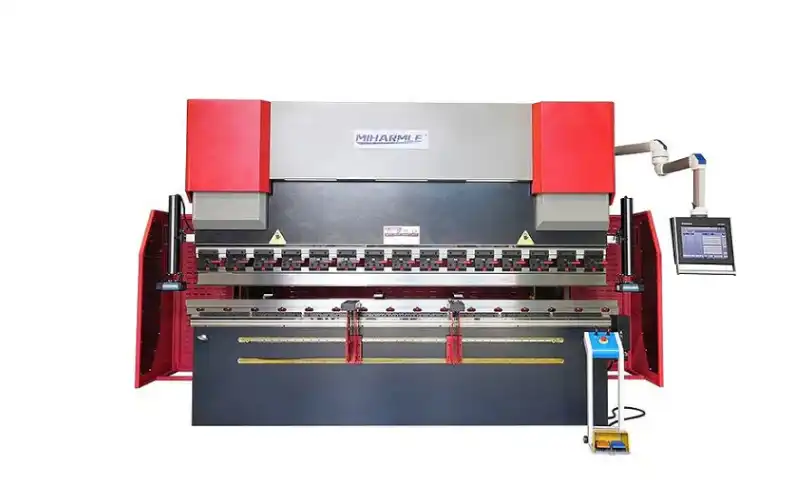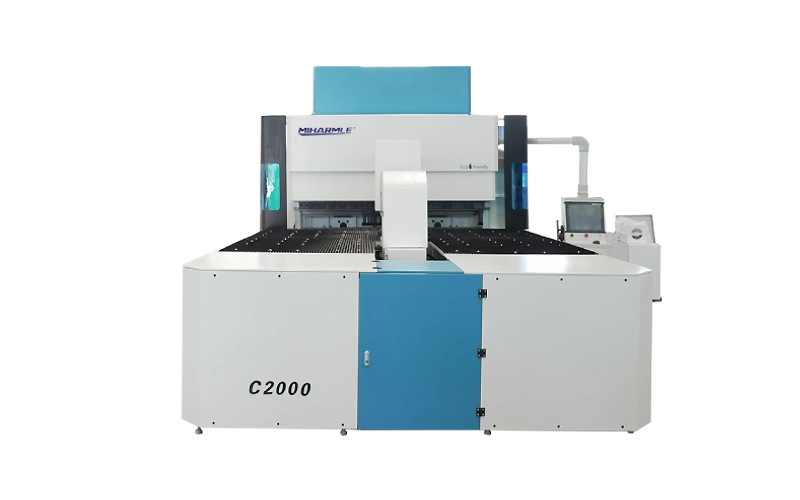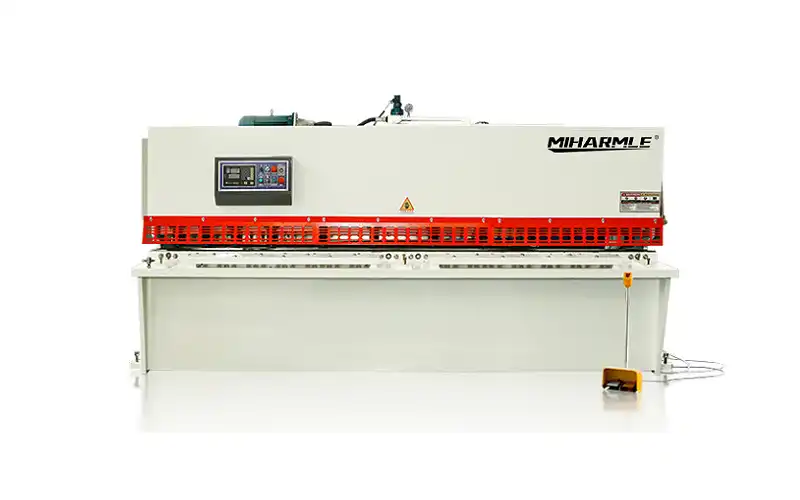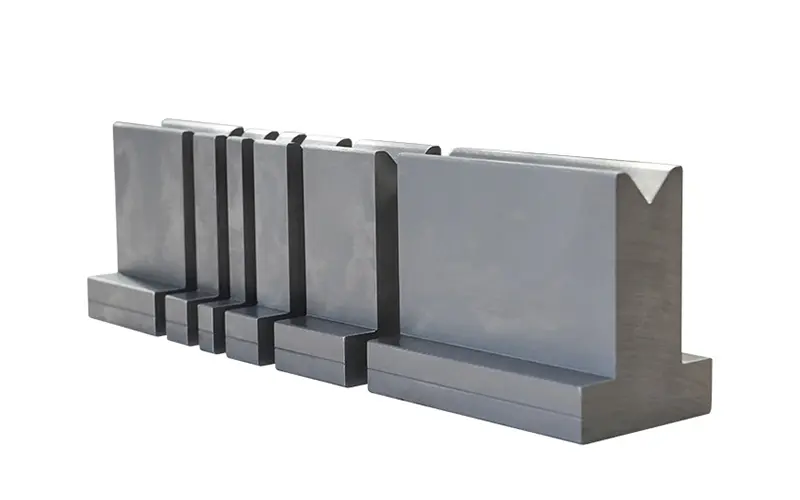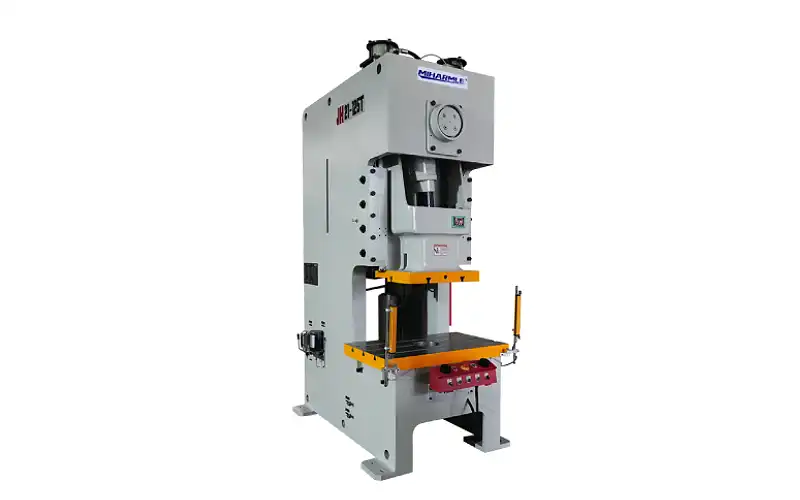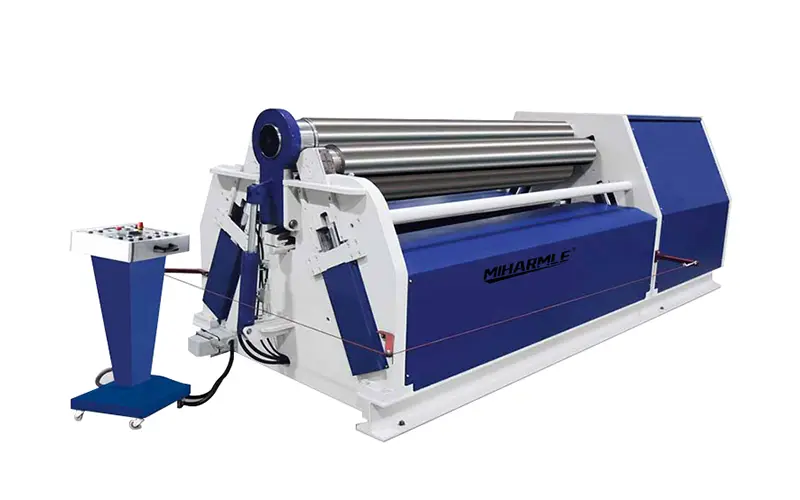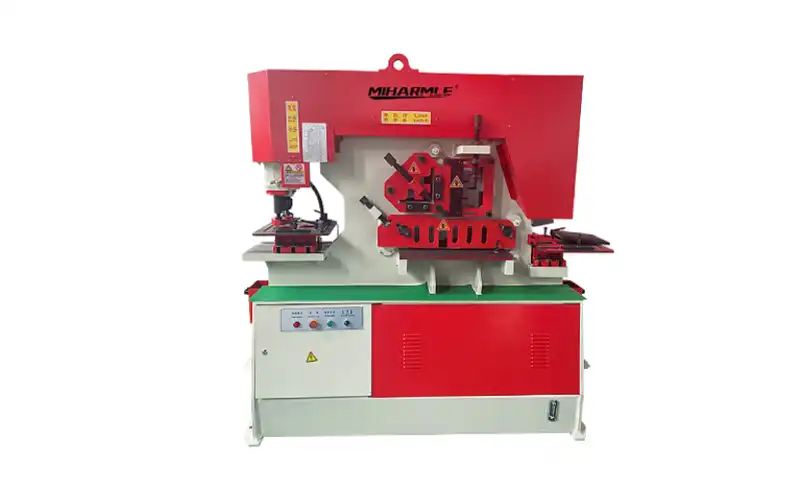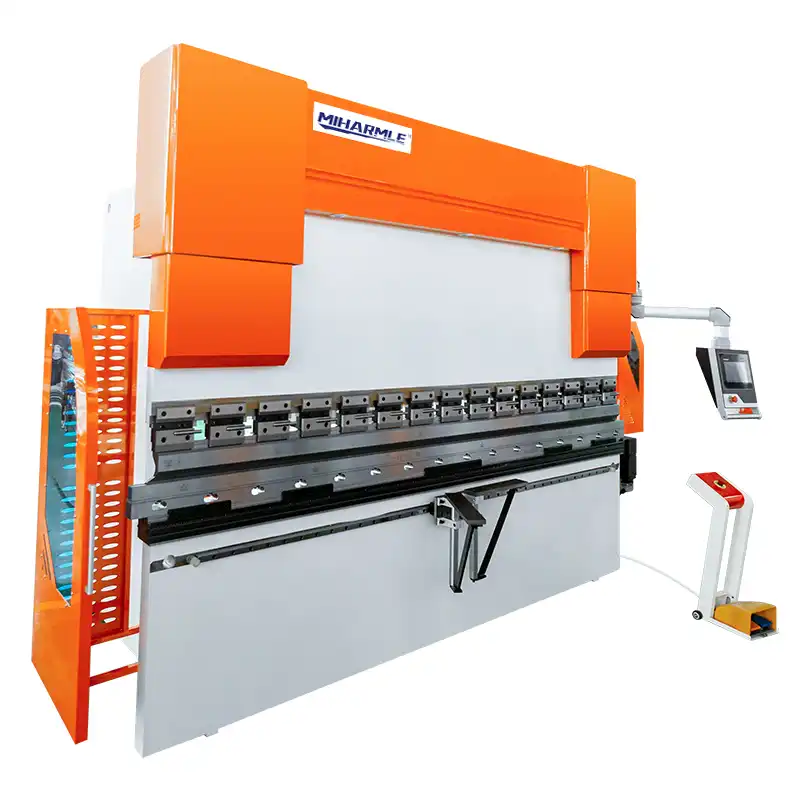Introduction
In the intricate realm of metal fabrication, the choice between a Press Brake and a Power Press holds significant implications for manufacturers.
These machines are like powerful tools in a craftsman’s workshop. They are used in shaping metal with precision.
The Press Brake, revered for its ability to bend and form metal sheets intricately, stands in contrast to the Power Press, a robust force excelling in cutting and punching tasks.
As we dive deep into the details of these machines, we explore their different capabilities, uses, and essential factors that guide the selection process in the ever-evolving manufacturing landscape.
Understanding Press Brake
The press brake, an important tool in making things from metal, is special for bending sheet metal into the desired shapes. This tool works accurately by holding the job between a top point and bottom flat, normally placed in two C-shaped frames connected to a bottom table and an upper bar.
Working Principle
The press brake uses a power tool to move the ram part. Using pre-set bending angles, this action lets the top and bottom tools bend sheet metal into various shapes.
Types of Press Brake
Mechanical Press Brake
The old-fashioned press brake used a foot pedal to control how it worked with the help of a friction clutch. The clutch connects to a spinning wheel that gets power from an electric motor. This moves the plunger up and down using crank parts. These press brake machines come in different sizes. They are used for jobs like packing small parts and truck frames.
Hydraulic Press Brake
Using two water pumps simultaneously, the hydraulic press machine is good for quickly and efficiently bending metal. Hydraulic press brakes used in the industry are very popular. They make work easier, stronger, and accurate to meet specific needs.
The safety part of the hydraulic press brake lets users stop punch movement any time they want. This makes it great for many ways to shape and bend metal.
CNC Press Brakes
The CNC press brake, which uses computer technology for better control and efficiency, offers great customization accuracy. This lets them be very careful with what they’re doing while everything works smoothly. The MIHARMLE CNC hydraulic press brake machine series is hot-selling, with precise and efficient cutting.
Advantages
- Flexibility – A press brake can bend small and big pieces of metal. Regardless of size, it is suitable for sheet metal processing.
- Material Efficiency – Brake buttons don’t use much stuff. This is good for nature.
- Cost-Effective – The tools used on the press brake are not costly. This is a cheap option.
- User-Friendly – The press brake is simple to operate. You don’t need help from experts to use it.
- Enhanced Safety – Modern press brakes now have safety features such as laser sensors. If anyone gets hurt using it, the machine stops working.
Disadvantages
- Space Requirement – The press brake’s sizable dimensions necessitate ample workshop space.
- Noise Production – Operational noise requires operators to wear protective gear and can induce vibrations in the workspace.
- Maintenance Demands – Regular maintenance prevents breakdowns and ensures sustained performance.
- Training Expenses – While simple enough, operators still require technology training, incurring additional expenses.
Components
The press brake comprises essential components, including the workbench, ram, punch (top die), and die (bottom tool). These elements work together, allowing the press brake to achieve precision in metal bending and forming.
An Overview of Power Press
A power press is a versatile metalworking machine. This machine can cut, punch, and shape metal into various forms. It takes energy from the system’s engine and is a dynamic force in metal fabrication.
Featuring diverse mechanical types, the power press transforms rotational force into translational force, embodying the essence of mechanical ingenuity.
These power presses function at higher speeds. The precision of the stroke range becomes a pivotal factor in the manufacturing process. This high-speed functionality positions the power press as a cornerstone in efficient and rapid metal shaping.
Working Principle
A power press works well because it can make machines produce lots of energy. The main part, powered by a motor, uses a wheel and clamp to connect the gears. The flywheel changes power energy and allows fast operations when joined with the interconnected power components. This enhances the overall productivity.
Types of Power Press
C Frame
The C frame looks like the letter ‘C.’ It gives workers room to move around easily while working. This type is versatile and often used for making things straight, drawing, or putting pieces together. Extra stuff like wheel stands, and gauges make it work efficiently. MIHARMLE Mechanical punch press series shop online.
H Frame or Straight Frame
The H-shaped design makes it strong. It doesn’t bend, is steady, and can do tasks efficiently. This machine has four box-shaped parts and works only in front of the power press. This makes the blade last longer. Even though H-frame power presses cost more than C frames, they provide long-lasting stability.
Hybrid Frame or Ring Frame
Using parts of both H and C frames, the mixed frame gives extra help at the front. This makes it stronger and avoids bending. This design makes blades last longer and improves the accuracy of workpieces, giving a fair choice between old-style framing types.
H Frames/Straight Side Frames with Tie Rods
These frames, featuring box post designs, are divided into four parts: pillar 1, pillar 2, crowning, base, and bed. These frames, made with hydraulic tie rods, help keep them strong and safe. They also make things precisely. They usually shape heavy metal sheets and work well with tools that change over time.
Advantages
- Easy Operation – Connected parts make it simple to use, which lowers running costs.
- Fast – The power press, known for its quick jobs, greatly increases productivity.
- No Leaks – Having no hydraulic oil eliminates any chance of leaks and makes it more reliable.
Disadvantages
- Fixed Stroke Limit – Connected parts make a fixed stroke limit, restricting uses that need different sizes of strokes.
- Big Spending on Maintenance – The power press parts can be pricey, resulting in more money spent on maintenance.
Components
A power press has a frame, bed, or bolster plate and a reciprocating part called ram/slide. The ram exerts pressure on the workpiece with special tools attached to the top and bottom. The frame holds the work area between the bed and the ram. This makes sure that things run smoothly during use.
Key Factors Influencing the Choice
When choosing between a Press Brake and a Power Press, there are some things to consider. Deciding what material to use, how much product you need, the complexity of each part, and the precision required.
For companies working with thin and delicate things that need accurate bending, the Press Brake is usually their first choice. Instead, when there is a lot of work with many steps needed, companies might choose the Power Press.
Power Press vs. Press Brake in Metalworking
Function
- Power Press – People usually call it a machine press. The main job of the power press is easy metal-formed tasks, including hitting out an object from thin sheet material or pressing designs into them and bending metals in different ways using strong needles to cut off parts apart easily. It makes force when the ram goes down, so it’s good for many metalwork tasks.
- Press Brake – The press brake is used for bending and shaping metal sheets. It uses a punch and dies to make accurate curves and folds in the material. Its attention to accuracy and complexity needs skilled operators.
Operation
- Power Press – This machine is controlled by a foot pedal and electricity system. It provides many tool choices connected to the moving part of the press called ram. It does really well in high-speed operations, so it’s perfect for making lots of things quickly and repeatedly.
- Press Brake – This tool uses hydraulic or mechanical methods. The operator places the metal sheet between the punch and die to shape it. The machine uses force to bend things in a controlled way. Usually going slower, the press brake is liked for tricky bending jobs. It highlights high accuracy and careful speed control.
Force and Precision
- Power Press – This is good for producing tremendous pressure. It’s made to apply a number of pressure whilst doing things like hitting and cutting that want strong pressure. But it usually does not match the accuracy of a press brake.
- Press Brake – It lets you manipulate the bending angle, ensuring your outcomes are correct and repeatable. This device is used to bend metallic pieces in factories or workshops. A press brake generally makes less force than a energy press.
Conclusion
In the world of metalworking, deciding on a press brake and a high-powered power press is like selecting the proper one for the activity. Accurate in striking steel sheets, the press brake works like an artist developing complicated designs. But the Power Press is powerful, best for excessive-powered metal cutting and sharpening.
When determining what to apply, remember your industry. The press brake is your move-to hero if you want careful bending and styling. But if you are in a hurry and generally tend to get lots achieved quickly, the Power Press is the superhero for you.
Remember, both have their strengths and weaknesses, so choose the one that best suits your needs and budget. Understanding press brakes and power presses in this ever-changing world is key to staying ahead with a tough metal job.
MIHARMLE is a professional sheet metal processing machinery supplier, you can browse our products to choose the right machine. If you have any questions, please contact our sales customer service staff.
